Chengdu is a popular destination for families with kids for one main reason: Panda Bears! In 2019, the captive giant panda population at the Chengdu Research Base of the Giant Panda reached 200, making it the only place in the world where one can admire so many Giant Pandas within the span of a few hours.
The last time I visited Chengdu from Beijing (3hr20min flight) with my two daughters, the panda base had five cuddly one-year old panda cubs proudly on display. We, of course, headed directly to view the babies first. My daughters squealed with laughter as they watched the five fuzzy black and white fur balls engrossed in a clumsy game of ‘tackle and tumble’. Next we ambled down the tree-line paths to view other enclosures that were thoughtfully created to simulate the treasured animals’ ecological natural environment. The adult pandas were nowhere near as active as the little ones prompting my nine-year old to question “Aren’t pandas supposed to be active in the morning?” She had a point. Although it was still morning, in contrast to the playful toddlers, most of the adult pandas we observed were chewing on bamboo shoots, moseying around looking for food, or lazily lounging in a comfy spot.
If simply seeing pandas isn’t enough, Imperial Tours can arrange for one to volunteer as a ‘panda keeper’ for a couple hours, an activity popular with both the luxury traveler and families alike, looking for a more exclusive or hands on experience. It begins with a brief educational session on the Giant Panda, then one gets busy cleaning panda cages, preparing their food, and feeding them! Unfortunately, my kids were too young to qualify for the ‘panda keeper’ activity (minimum ages is 12 and up).
A lesser-known animal we also spotted at the panda reserve was the endangered Red Panda, better known to my kids as Master Shifu from Kung Fu Panda. Despite their moniker, red pandas are not closely related to the Giant Panda. The small mammals may resemble bears or raccoons and were previously categorized as part of the bear and raccoon families, however, we learned that they are in fact a genus of their own known as Ailurinae. The red panda is found in the mountainous forests of China, India, Nepal, Bhutan and Myanmar, where numbers are down to a few thousand individuals and decreasing every day due to hunting and habitat loss. They are excellent climbers, forage largely in trees and eat mostly bamboo.
Let’s just say, a chance to meet Po would not have been complete without an encounter with Master Shifu as well.
– Nadia is an itinerary designer at Imperial Tours.
Note that several panda reserves are available. Your Itinerary designer at Imperial Tours can advise the best venue to visit based on your interests.
One of the most received comments from clients who are on their second or third trip to China goes something like “…I can’t believe this is China, I barely recognize it.” This will of course be true for those who first ventured out to the Middle Kingdom in the 80’s and 90’s but is even the case for those who have been as recently as 2008 for the Beijing Olympics. There’s a variety of changes that people are impressed by. For many it’s the vertical madness of the sky scrapers in Shanghai, for some it’s the lack of bicycles which were once ubiquitous, and others notice the increased refinement in fashion and luxury that China has quickly embraced.
Having lived in Beijing for the past ten years, most of the changes I’ve noticed have been gradual and systematic. Neighborhoods are modernizing, travel (including luxury travel in China) is gaining ground, culinary and nightlife options are increasing, and the Chinese are dipping their feet into an immense variety of new hobbies and experiences.
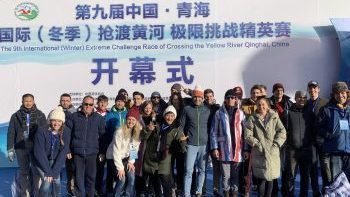
Among these, and very close to my heart, are endurance sports. While the most iconic event of the Olympics is widely considered to be the marathon, in the curious world of 2020 it is not seen so much as the pinnacle of endurance, but an initiation into a world of much more grueling tests of physical and mental exertion. The most popular incarnation of these are known as ultra-marathons. Every event which goes beyond the 42km (26.2 mile) distance is considered to be an ultra-marathon, with the 50km and 100km being the most popular versions, but with many going well beyond that. One would assume such masochistic endeavors are the reserve of a small and uniquely disturbed set of individuals, but the popularity of these events quickly belies that assumption.
In 2009, my first year in China, I would go for evening jogs around some of Beijing’s small man-made lakes and it would be a rare surprise to encounter even a single other jogger along the way. These days you will encounter dozens of other joggers along the most popular routes of the city regardless of the time of day, morning through evening. From virtually none ten years ago, there were 1,581 marathons held in 2018, and while ultra-marathons naturally have a smaller pool of participants, there was still a whopping 450 events in 2018. That is an average of 9 events per weekend where each participant is required to go for at least 50km…no small feat.
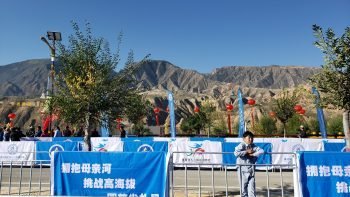
This development has been a boon for events, sportswear, travel, hospitality and plenty of other industries. The addictive nature of the sport ensures loyal customers, and China’s immense geographical variety means that participants can have their pick when choosing races. Be it the lush rainforest of southern Guangxi province, the arid desert of Gansu, or the snow-capped Himalayas, runners are spoiled for choice and constantly on the lookout for another fix. One of the world’s most famous marathons now takes place every year at what is perhaps China’s most internationally famous icon: the Great Wall. With hundreds of meters in elevation gain, no runner will be brazen enough to try for a new personal best time, but the stature of the Great Wall Marathon has become such that the race is now dominated by people who make the trip to Beijing solely for the purpose of completing the gruelling race.
If you are feeling up to the challenge, make sure to contact the Imperial Tours team who can arrange a customized tour before or after you take part in the race. After all, the Great Wall is just the beginning of an amazing China experience.
– Jaime is one of Imperial Tours’ Itinerary Designers.
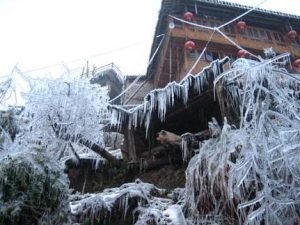
A trip to China would not be complete without a visit to Yangshuo area, in the south of China. If you have seen the movie The Painted Veil, this was shot mainly in Guangxi province, officially called the Guangxi Zhuang Autonomous Region. It is one of five so-called autonomous regions where the number of ethnic minority groups are higher than in other places – in Guangxi, it is the Zhuang minority (the Mongols in Inner Mongolia, Tibetans in Tibet, Uyghur in Xinjiang and Hui in Ningxia). While they still answer to the federal government, they benefit from more independence in finance, economic planning, arts and culture. The spoken and written languages of these ethnic groups are protected, with greater or lesser success…
A few years ago friends visited us in December and wanted us to take them to see off-the-beaten-track China. We flew from Shanghai to Guilin (2h50 flight), took a bus to Yangshuo, then a smaller bus to Ping´an, famous for the Longsheng rice terraces. As it was winter everything was covered with a thin layer of snow and ice. The bus driver started talking to the passengers in the front and pointing at us four. I could not understand because they were speaking Zhuang dialect, but I caught the word «laowai», slang for foreigner. Suddenly the bus stopped and somebody instructed us to get off the bus in Mandarin. “You are laowai, the road is too slippery and we can´t take the risk with foreigners. Please get off now.” So there we were, stranded on the side of the road, freezing cold with our backpacks, watching as the bus sped off. In a way, we were glad that they kicked us off because we trusted our legs more than that skating bus! (If only we had paid for an Imperial Tour rather than gone off back-packing by ourselves!) After a two hour hike up, we finally made it to Ping´an. I had visited the area in spring and fall when the rice terraces are covered in a wide range of green shades, but this time everything was white. It was incredible and I could not believe my eyes. Unfortunately, since everything was frozen, the water pipes in our hotel were frozen too which meant no hot water or heating. But as we hiked through the scenic, fairytale landscape wrapped withgloves, hats, scarves, it really did not matter!
Rice terraces in Longsheng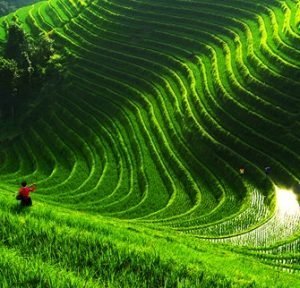
Now as I am sure you are thinking, this is not really my definition of luxury China travel! And you are absolutely right. That is why Imperial Tours’ guests usually spend two nights at the luxurious Banyan Tree Resort (one of China’s top five luxury rural getaways) in Yangshuo, where one wakes up surrounded by karst peaks. Here you venture on a traditional bamboo raft for a relaxing ride along the Li River in the early morning to avoid the crowds. The remainder of the day is spent exploring the beautiful countryside, by bicycle or by car, wandering through rice paddies and learning how to make soy milk and tofu from villagers.
For those who would like to spend more time in the area, we can arrange a night or two in Ping´an at the Li´an Lodge (while relatively basic and not at the level of our typical five-star hotel choices, accommodation is clean and comfortable). You will be led on a hike between several minority villages, offering you the best views of those spectacular terraced rice fields carved into the hillsides more than 500 years ago by Zhuang minority farmers.
All without frostbite, we promise!
– Gwen is an itinerary designer at Imperial Tours.
Read this post from Guy Rubin to learn more about the region’s history.
Whilst travel companies typically extol monuments of the past, China’s attractiveness as a destination extends to its impact on our children’s future. For the past few months we have been looking into the folds and contours of China’s evolving landscape. Previously we looked at the revolution in smart phone apps and payment systems, at leapfrogging technologies in retail and at the development of Artificial Intelligence. Expanding upon the concepts of future, we sat down with Will Beloe, a Global Product Specialist at the International Finance Corporation (IFC), an arm of the World Bank, to discuss China’s approach to the environment. Will has been covering China for nearly two decades and for the last five years has been responsible for driving green investment in financial institutions in developing countries across Asia, including China.
Guy: Why do you think China is taking environmental issues so seriously? Is this a national or global concern?
Will: China is taking its environmental issues very seriously primarily because the country’s narrow focus on economic growth over the last 30 years has pushed its ecologic system to a breaking point. Anything between 3-9% of GDP is lost to pollution (air, water and soil) per annum. China’s government knows all too well that it has an obligation to protect its people from such harm. Climate change is a layer of costs and risks on top of that.
Guy: Are there any areas of green growth where China is leading the world?
Will: China makes 2/3rds of the world’s solar panels and nearly 1/2 of the world’s wind turbines. China had more battery-only electric car sales in 2016 than the rest of the world combined. 1 million Chinese are employed in its solar sector.
Guy: In what areas of climate change is China contributing to a global solution?
Will: China is driving green growth for two reasons – it has tot clean up its soil, water and air, particularly in its mega-cities; and because it is now a market leader in many of the areas. China is beginning to stand tall in areas including green finance. The work IFC has done with local financial institutions (FIS) has led to a reduction in emissions over 50 million tons of greenhouse gasses PA. This is more than our work with other FIS around the globe combined.
Guy: In your field of endeavour how well does China integrate its work with other countries?
Will: Under Xi Jingping, China is no longer 韬光养晦 (hiding one’s light under a bushel). China has bid its time beautifully on the emerging green economy and is now leading the world in many areas, such as those already listed above. It is likely to do the same in the carbon markets (this will take a few more years), in clean green cities, in water management etc.
Guy: In what areas is China a threat to the rest of the world environmentally and in what areas is it a force for the good?
Will: Depends on whether your glass is half-full or half-empty. China is facing some of the world’s biggest problems when it comes to pollution (second only to India). Given its recognition of these threats and the position the government is in, it has the potential to solve these problems in a way that most other countries could not. The solution it implements will do more than most to help put us on track to avoid the worst climate change scenarios, and it will provide a hugely valuable template for others to follow. There are complaints of China dumping solar panels/wind turbines and in the future probably electric cars in other countries. In the end, how bad is that for the world?
Guy: How do you think China could improve in its interaction with multilateral organizations in the area of environmental research, policy formulation?
Will: It has been stymied in its attempts to grow its engagement with already established multilateral organizations. As a result, it ahs ended up establishing a number of its own. Net net, this is likely to be a positive for all but the incumbents.
Guy: How do you view the future of China’s environment and the impact China will have on the earth’s resources and environment?
Will: I am optimistic that China will manage to deal with its population and climate problems faster than almost all other countries will and could. By doing so, it will provide leadership and a roadmap to others. It is an excellent ‘soft power’/economic opportunity that is not lost on its leadership.
Guy: Thank you for your honest opinion and perspective Will, we are looking forward to what the future of China holds.
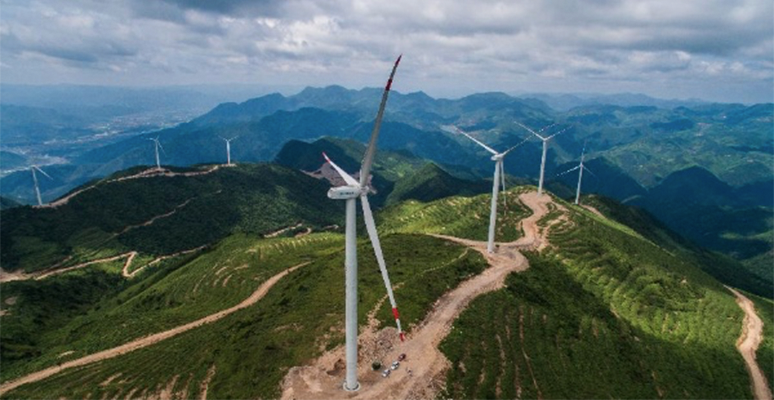
China is heavily investing in technologies for the future across all spectrums of industry – from renewable energy, medical advancements to transportation. Imperial Tours has collected a roster of experts to showcase the dynamic transitions China is making as a global player. We can arrange for you to meet these experts to discuss and learn about China’s political and economic strategies and investments in technology.
Experience the great outdoors of China. Breathe in the crisp clean air and stand in awe over her beauty. While we guarantee your China experience will be one of culture, cuisine, and wonderment, it can also be filled with breath taking scenery and dramatic landscapes. China’s natural landscapes offer experiences for all types of travelers. To help showcase some of China’s outdoor experiences we have compiled in this article the best natural destinations.
So when packing your bags, be sure to include some comfortable shoes, hydration gear, and of course – a camera.
The Great Wall of China
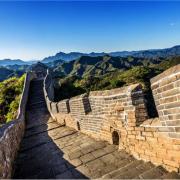
One of the many views on the Great Wall
We have all heard of it, with its impressive 20,000km length, The Great Wall of China is one of the most monumental manmade structures in the world. Built throughout different dynasties, beginning in the 3rd century B.C, the Great Wall was originally built to prevent an invasion from barbarian nomads. Today, the Great Wall of China is one of the most visited attractions in the world. And for nature lovers hoping for a remarkable and less touristic hike, you will be happy to know that the Great Wall has many sections that have been left virtually untouched and tourist free. These ‘off the beaten trail’ areas provide picture perfect wild sceneries, where more adventurous travelers can enjoy breathtaking views of the Great Wall surrounded by nature.
Biking & Hiking in Huangshan
In the Southern area of Anhui Province, just three hours by high-speed train from Shanghai, you will discover the Huangshan Mountain range. The Huangshan Mountain range, featured in the blockbuster movie Avatar, is also frequently referred to as the Yellow Mountains. Huangshan is classified as a UNESCO World Heritage Site famous for its beautiful scenery, breath taking sunrises and sunsets, and of course the almost magical sea of clouds that sweep throughout the mountains. With more than 50km of footpaths and trails, as well as cable cars to help ease tired legs, you can spend the day hiking the various trails and viewing the dramatic scenery. After your day on the mountain, ease your tired legs at the beautiful Banyan Tree located just off the mountain.
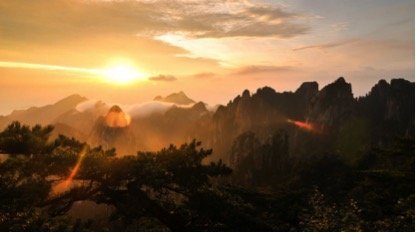
Sunrise from above the clouds in the Yellow Mountains
After your night of relaxation, spend the next day discovering the Ancient Villages of Hongcun and Xidan. Both villages have long history and splendid Anhui Culture as they remain untouched since they were built in the 14th century. Be transported to another era walking through the unique alleyways and ancient buildings, all the while being wrapped in the delicate aroma of hand picked local tea and fresh flowers.
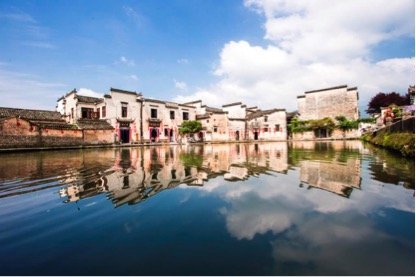
View of the Ancient Village of Hongcun
Guilin & Beyond
Located in the South of China, consider Guilin as your jumping off point to experience some of China’s most beautiful natural environments. There are many unique scenic places located only 2 hours or less from Guilin. However, two of the most beautiful locations, ones that will leave you speechless, are Longsheng and Li River.
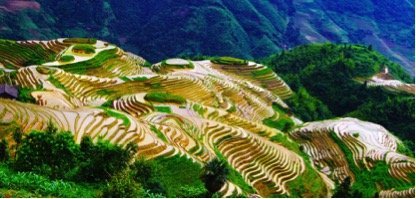
Long Ji Rice Terraced fields
In Longsheng you will find the iconic Long Ji (Dragon’s Backbone) Rice Terraces fields. Featuring more than 66 square km of terraced fields, within mountains 800m above the sea level. If you’re wondering when to visit, the best time of the year to visit the Longsheng fields is May, when irrigation starts, and the fields are filled with water reflecting the image of the sky, creating a unique effect.
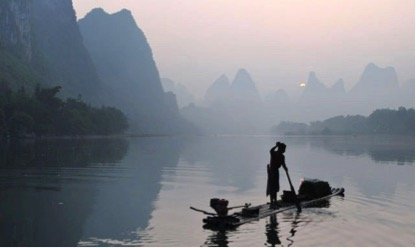
Fisherman on the misty Li River
During your adventure in the Guilin area, you can also experience sailing on the Li River. As you cruise along the river banks you will discover the dramatic landscape of the Li River with its green hills, clear water, peculiar stones, caves, and famous mist that give the river its iconic look.
Hike to Ganden Monastery in Lhasa, Tibet
Only 40km away from the capital city of Tibet, Lhasa, settled on the top of a 4200m-altitude mountain, you will discover Ganden Monastery. In addition to being one of the largest monasteries in Tibet, Ganden Monastery is also one of the 3 Great Temples along with the Sera Monastery, and Drepung Monastery. However, Ganden Monastery is the only monastery of the 3 where you can take inside photos, for a reasonable fee. Despite the beauty of the Monastery, the must-do highlight is to hike around the Monastery. The kora, or holy pilgrimage route around the Ganden monastery, is truly one of the most magical and inspiring places in the world. Not only are the views breathtaking, the experience of prostrating pilgrims and monks walking along with you, is something we cannot begin to put into words.
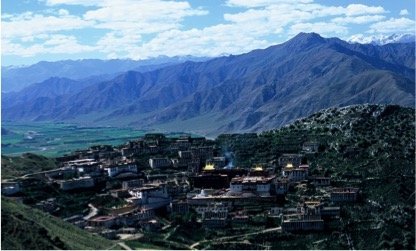
Lhasa Valley & Ganden Monastery
Shangri-La
Formerly known as Zhongdian city, Shangri-La is one of the most beautiful places in China. Described as a mystical and harmonious earthly paradise by British novelist James Hilton, in his 1939 “Lost Horizon” novel, Shangri-la is truly a place of wonderment. Located at the meeting point of the Tibet, Yunnan, and Sichuan provinces, Shangri-La has an eclectic mix of ethnic groups, but is mostly inhabited by Tibetans. Its isolated location 3,000m above the sea level, offers travelers the opportunity to discover and learn from the Tibetan culture and lifestyle, while experiencing the vast natural landscapes of China. Shangri-La is a city surrounded with culture, history, and natural wonders. For the nature loving traveller, Shangri-La is a must.
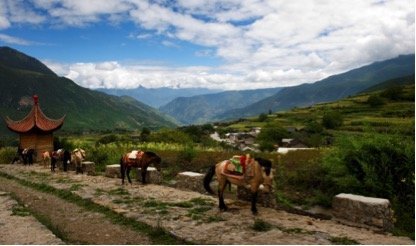
Experience the vast nature of Shangri-La
Hong Kong
While the image of Hong Kong may bring skyscrapers and crowded streets to your mind, what you may not know is that three quarters of Hong Kong’s landscape is countryside and 40% of its territory is protected for nature conservation. So after experiencing one of the most exciting metropolises in the world, escape the streets of Hong Kong and head outside to experience great hikes and outdoor activities for travelers and locals alike.
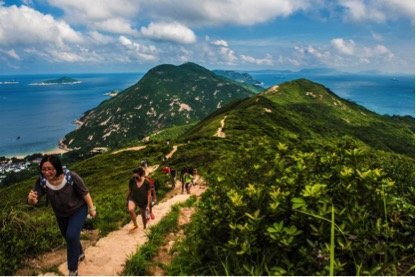
Hiking the Dragon’s Back Trail in Hong Kong
One of the best and most popular hikes in Hong Kong is the 8.5km-long hike along the Dragon’s Back ridge. The name of the ridge comes from the dragon like shape of the path that connects Wan Cham Shan hill and Shek O peak. Gentle slopes will guide you along the trail while you enjoy unbeatable views of the South China Sea and the coastal buildings of Hong Kong Island. When you reach the end of your trek, relax in the sandy and blue sea beaches in Shek O village or Big Wave Bay.

Chinese Pink Dolphin in the waters of Hong Kong
Finally, a must do on your visit to Hong Kong, is to see the famous Pink Dolphins. These unique dolphins are a subspecies of Indo-Pacific dolphins that only appears along the Chinese coast. Their unique pigmentation comes from blood vessels close to the surface of their skin. Unfortunately, as a result of loss of habitation, they are classified as endangered. However, they are always happy to receive and show off for visitors, which incidentally make for amazing photo opportunities. To see them in their natural environment, join a day tour of dolphin watching and experience an unforgettable moment within these unique inhabitants in the waters of Hong Kong.
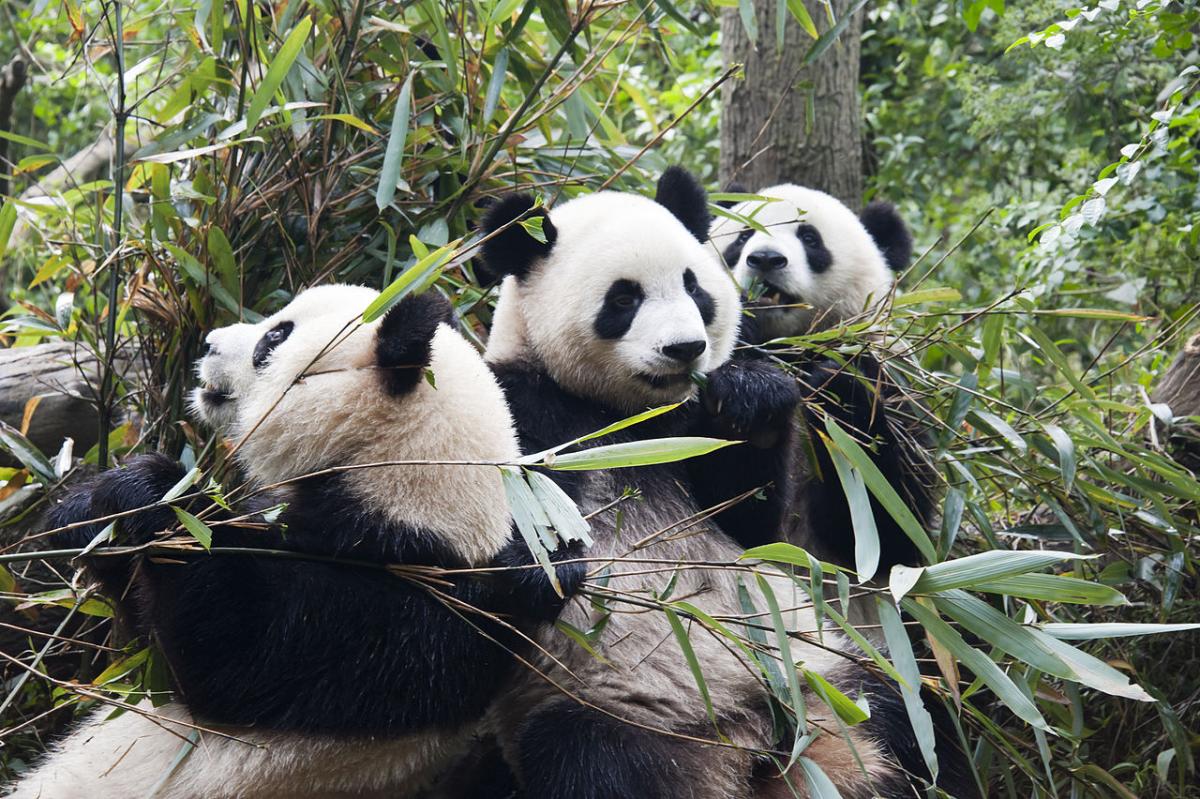
Pandas are the national animal of China and are a must-see if visiting the province of Sichuan, home to 80% of the population of Giant Pandas. Nowadays they are endangered and it’s very rare to see them in the wild. Some zoos around the world are lucky enough to host pandas, but if you really want to see them interact in a more natural environment then schedule a visit to one of these panda bases.
Chengdu Giant Panda Breeding and Research Base
Also known as the Chengdu Panda Base, this breeding center is located about 30 minutes from Chengdu’s city center. It is the largest and most well-known panda base in China and is the place where you will find the largest number of Giant Pandas of all ages. It is also the home to many other endangered species like Red Pandas, black-necked cranes, white storks as well as over 20 species of rare animals.
One of the best times to visit the breeding center is in high summer between July and September. With a bit of luck, you will see a row of swaddled baby pandas in the nursery through its floor to ceiling plate glass windows. After that, find the young pandas to enjoy their animated interactions in a grouped pen. At a young age, they enjoy each other’s company as they clamber up trunks, hang down from arching branches and wrestle with each other along the forest floor. At meal times, the larger solitary adult pandas wake from their lazy slumber to mosey to a nearby pile of bamboo shoots laid out by the keepers for them. Their muscular jaws make quick work of stripping, mincing and munching through their fodder.
For those with a time limit it is recommended to visit this center as it’s the closest one to Chengdu city center, but note you cannot hold pandas here.

Young panda cubs at play
Dujiangyan Panda Base
This Giant Panda Base covers an area of 56 hectares and is located by Qingcheng Mountain in Dujiangyan, about 34 miles from Chengdu. This is the place to come if you want to have the opportunity to hold a panda. It’s a very exclusive experience so must be booked in advance as the young panda only accepts 20 pictures a day! You will sit with the panda only long enough to have your photo taken with it so the experience is over quickly but the memories will last for a lifetime.
At this panda base you can also become part of the Panda Keeper Program and act as a volunteer for the day – this is the perfect way to learn about pandas and get up close to them. You will be provided with special work garments and tasks include cleaning pens, slicing bamboo for the pandas (pandas eat about 40kg of fresh bamboo shoots a day, so get ready to work!), prepare panda snacks, and other activities that the base has prepared for you.

Red Panda – native to the eastern Himalayas and southwestern China
Panda Valley (Baima Village, Dujiangyan)
If you are looking for the experience of seeing pandas in a quieter and more natural environment, then this is your place. Panda Valley is located 1h30 away from Chengdu, also in Dujiangyan.
It is a small panda base that you can easily walk around in an hour and where you will find about a dozen pandas as well as the beautiful and endangered Red Pandas. The area has been landscaped beautifully.
Here you can also have a once-in-a-lifetime experience: become a volunteer for a day. You will join the Panda Valley staff in preparing meals for the pandas, cleaning the pens and feeding your assigned panda. By the end of the day you will have learnt lots about pandas and will receive a certificate for volunteering.

Cai Guo Qiang, one of China’s best-known artists, opened his blockbuster The Ninth Wave exhibition with a literal bang on August 8th as his signature multicolored ‘daytime fireworks’ exploded over the Huangpu River. Located at the Power Station of Art on the river bank, the impressive scale matches the huge exhibition spaces that this relatively new venue offers.
The highlight of the exhibit is the eponymous The Ninth Wave, an ark filled with stuffed animals, which brings to mind Noah’s Ark but was actually inspired by Russian painter Ivan Aivazovsky. Also featured is a literally groundbreaking exhibit entitled Silent Ink – a 2,960 square foot lake carved out of the museum floor and filled with calligraphy ink. In the style of a traditional Chinese ink paintings, various gunpowder paintings imagine a post-apocalyptic Shanghai, overtaken by nature and without human life. Using animal and plant motifs, Cai references traditional Chinese forms of artwork alluding to a time when people lived in harmony with nature. Hopefully, Cai’s ark of near dead animals along with his other environment-related works will continue to draw attention to one of China’s biggest priorities as he states, “their not being dead leaves possibilities and space for imagination.”
The exhibitions runs through October 26th and is a must for art lovers visiting Shanghai.
The media's fixation with China's air quality
by Guy Rubin
 In his predictions for 2014, columnist Richard Turen suggested that travel sellers "must, in keeping with industry ethics, inform potential leisure travelers to China of the dangers [of air pollution] and the fact that residents of Beijing are now routinely wearing masks as they walk about the city" (Reality Check, Dec. 30: "Selling happiness and other predictions for 2014").
In his predictions for 2014, columnist Richard Turen suggested that travel sellers "must, in keeping with industry ethics, inform potential leisure travelers to China of the dangers [of air pollution] and the fact that residents of Beijing are now routinely wearing masks as they walk about the city" (Reality Check, Dec. 30: "Selling happiness and other predictions for 2014").
While it is fascinating to read Richard's usually prescient and insightful views, on this occasion I feel they are misleading on several counts.
First, I live in Beijing, and while a tiny minority do wear masks during bad pollution spikes, the vast majority don't. So, to allege that people routinely walk about the city in masks is uninformed, and the allegation's factual and conceptual inaccuracies perpetuate a media bias against China.
As he does not live in Beijing, Richard relies too much on media outlets to inform his views. He may well have missed the comment of Bridget Kendall, a BBC presenter visiting China last November, who said, "Everybody is talking about pollution in Beijing. I must say it's a lovely blue-sky day here … today. I don't know what they are talking about."
Kendall made her observation a day after Western newspapers had published yet another series of apocalyptic-looking pictures of a heavily polluted Chinese capital. Her off-the-cuff remark reveals a lot because she was alluding to the chasm between reality and the way Western media present China to the world. I wish I had a penny for every guest of Imperial Tours who has made the same observation.
Why was everybody talking about air quality in Beijing but not about more polluted cities?
For example, the New York Times reported that New Delhi's average daily peak reading of fine particulate matter from the monitor Punjabi Bagh was 473, more than twice Beijing's for the first three weeks of this year.
India suffers more deaths from asthma than any other nation, according to the World Health Organization, and a recent study found that Indians have the weakest lung function in a sample of nonsmokers from 17 countries. So, given that India's air pollution is as much as double China's, do "industry ethics" bind Richard to dissuading his clients from traveling there also?
A wider point relates to the nature of travel itself.
Richard suggests in the same article that travelers should avoid China because they might find themselves in a smoky venue in the evening, presenting a risk of respiratory illnesses. Once you start down this road of risk analysis, it can start getting absurdly subjective: For example, should I dissuade Chinese clients from traveling to the U.S. so they don't get shot? After all, as many as 81 people die of gunshot wounds daily in the U.S., and I hear that residents of New York are now routinely wearing bulletproof vests as they walk about the city.
Or, embracing Richard's logic, should I steer Americans away from Paris or Rome because the French and the Italians like the occasional puff? If, on the other hand, Richard's point is that smoking is now less widespread in Europe than in China, then I will observe that reputable tour operators to China can suggest countless restaurants where cigarette smoke is not an issue.
My underlying point is that the joy of travel is to explore other cultures, not all of whose values would play well back home. I recall coming close to an elephant stampede during a walking safari in Kenya, yet I would never warn people away from the unbridled excitement of a safari.
If there is anything useful or objective to glean from such warnings, it is that China is routinely held to a higher standard than other countries. That begs a question posed by Joshua Keating in Slate: "Why does China's air pollution get so much more attention in the international media? Part of it may simply be the fascination … in the U.S. and Europe with anything having to do with China."
Whatever the reason, it might come as a surprise that air pollution, like many other issues, is being dealt with effectively here, since this is a country that knows how to get things done. A glance at the Beijing skyline reveals that this modern city is moving fast. What might take 300 years in the West can be accomplished far more quickly here.
Over the last 30 years, China has experienced unprecedented urbanization as staggering numbers of people have been lifted out of poverty to become the beneficiaries of economic reform.
In the old days, when that sort of thing happened in the West, the migration from rural to urban environments was generally reported as a good thing.
Similarly, when the deputy mayor of Beijing "declared war" on air pollution last July with an 84-point plan that named officials responsible for achieving a 25% reduction in particulate concentrations in five years, the Western media responded with a collective yawn.
And even as media pundits were reporting that Beijing's pollution would take 30 years to address, by November 2013 we already had observable results. Last Dec. 4, commenting about the improvement in air pollution in Beijing, I wrote on Imperial Tours' Facebook page that there had been "nothing in the foreign media about it, as though it is not happening, but there are at least 20 million witnesses to it."
Yet, when later that same day there was a pollution spike in Shanghai equal to a normal day in New Delhi, that story hit newspapers worldwide. Similarly, a pollution spike in Beijing on Jan. 14 for a few hours was widely reported. But what was not reported was that over that winter, air pollution in Beijing had enjoyed an average 4.5% year-over-year improvement. No country can withstand these arbitrary levels of media scrutiny.
The Chinese government is moving decisively on air pollution.
First, more than 8,300 polluting companies in surrounding Hebei province have been closed down, and the impact has been tremendous.
Second, 74 cement factories in nearby Shijiazhuang are being leveled as I write this, after which the western half of that industrial city will be redeveloped.
Further, China's national $277 billion environmental plan anticipates that by the end of 2015, China's road stock will run on China 5 gasoline and diesel (10 parts per million sulfur content), facilitating vehicle emissions standards far more stringent that those in the U.S. Through wide-ranging actions such as these and many more, the Chinese government is bringing air pollution under control more quickly than anyone imagined possible.
That said, let me be clear: The media doesn't lie. There are pollution spikes every so often in China, such as the ones reported during winter, the low season for travel. Most people aren't affected by an air quality index of 150 or less, which is well above Beijing's current yearly average of 116 as reported by air.fresh-ideas.cc on Feb. 10. Our visitors, especially those visiting for three or four days during the cleaner air of the tourism season, rarely notice.
Nor would I suggest that prolonged, long-term exposure to polluted air is not harmful. That is why the government is tackling this issue with such urgency. Fortunately, visitors are not subjected to long periods of breathing polluted air.
The suggestion that the Western media are ideologically and emotionally charged in their coverage of China, especially in light of its legion laudable achievements, is nothing new. What I ask from savvy and experienced travel agents such as Richard Turen, his clients and you, his readers, is to interpret the reporting critically and in context and not fall prey to inherent bias.
To be inspired by China's history, culture and success and to respect, appreciate and learn all that the Chinese people have to teach, you must travel here. Please do so without fear of bad air and smoky rooms. Every travel experience anywhere has its risks, but it is inadvertently biased and misguided to dissuade tourists from visiting China on account of air pollution.
Guy Rubin, managing partner of Imperial Tours (www.imperialtours.net), a luxury inbound tour operator for China, has been based in Beijing since 1997.
(Above Photo: Memorial archway dedicated by Wanli Emperor (Ming dynasty) to Hu Wenguang, Huizhou’s governor.)
China…you think of the Great Wall, the Terracotta Warriors in Xi’an, the Pearl Tower in Shanghai. But have you ever heard of Xidi, a small village in Anhui province close to the Yellow Mountains, less than an hour from Shanghai by plane (or over 10 hours by train, your call!)?
My name is Gwen and I love backpacking. When I have some free time, I travel around China and stay in guesthouses. My favorite time of the year to go to the Yellow Mountains is winter because it is magical up there when it is cold. I wake up at dawn and wait for the sunrise to warm me up. The pine needles and the tree leaves are covered with ice, and still one can see the yellow buds underneath. Squirrels and native macaques seem to wonder what happened to all the tourists and megaphones.
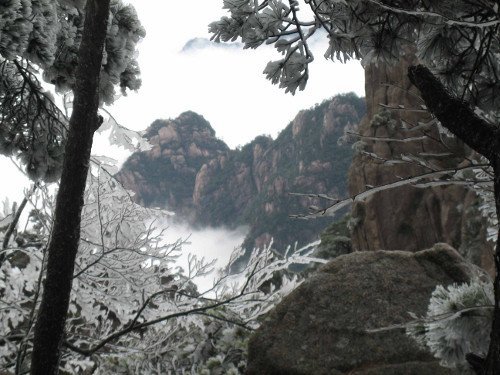
A visit to Huangshan would not be complete without spending some time in a small rural village like Xidi. I would lie if I told you Xidi is a remote village without electricity and running water. It has become a popular destination since it was listed on the UNESCO World Heritage List in 2000. It all started with the Hu Family, a very influential family in commerce and politics, whose members became imperial officials during the Ming and the Qing dynasties. They later settled in Xidi where they became merchants and started building residential houses, schools, halls and temples dedicated to the ancestors. At its peak in the 19th century, the village had more than 600 residences. It started to decline during the later Qing dynasty and the disintegration of the feudal clan system. Today it comprises about 120 well preserved residences.
I like going there in the winter and spending a night there. I wake up at an early hour and walk through the deserted narrow alleys. I am back in time and witness the village awake to life. A young lady washes her face in a waterway dating from the 14th century; she raises her head at the sound of a bell. An old woman pushing a wooden cart is selling fresh tofu; within minutes, villagers clean out her supply. I can’t help taking a glimpse through a half-open door: behind these imposing whitewashed outer walls with tiny little windows – to prevent robbery – are hidden some courtyards decorated with delicate carvings and bonsais. The shop owners are slowly taking out the wooden panels that act as main doors and look forward to the morning tourist buses. It is time to go and on my way back to Shanghai, I can’t help thinking about all the other ancient villages around China that don’t have the UNESCO support and vanish under the merciless urban development…
Gwen Besrechel is an Imperial Tours Itinerary Designer. Originally from the beautiful, windswept region of northwestern France she has spent the last 9 years in cosmopolitan Shanghai. A natural linguist, Gwen opted to explore China, foresaking her original career teaching German in secondary school. As comfortable in English and German and of course her native French as she is in Chinese, when she is not designing amazing itineraries, Gwen is hiking a trail through stunning landscapes all over the world. As well as crossing many mountain ranges in China – from Guilin’s karst spires to Huangshan’s granite tusks – Gwen has trekked five continents from the Inca Trail in Peru to Gunung Rinjani in Indonesia.
On October 9, 2000, five explorers set out in the middle of the world’s fifth-largest desert, the Taklimakan, as a team to walk the entire length of the Ming dynasty Great Wall of China. After a few weeks, winter set in and the terrain was covered in snow. By March the following year as winter lifted, only one remained – Argentinean explorer and photographer Diego Azubel, who continued to trek alone for another nine months arriving at the East China sea at the end of the following year. This was Diego’s first trek in China. (His second took him across the Tibetan Himalayan mountains and through the Nepalese civil war… don’t ask)
Now married with a trilingual daughter, I asked Diego what it takes to walk the entire length of the Great Wall of China?
Good shoes, and a lot of time!
But as with anything else, you need to be sure that you want to do it. You need commitment. Because these walks, more often than not, take much longer than expected, and test you in ways you probably never experienced before. Also, as opposed to climbing up a mountain where there is only one way up and usually small windows of opportunity when the weather allows you to do the climb, in a long horizontal walk it is very easy to ‘take a detour’ or a break. And when you do, it is harder to come back.
Why did you want to walk the Great Wall of China?
I first came to China in 1997 and left with the intention of coming back. While I was in London editing a story on slavery in Mauritania, an opportunity to walk the Great Wall of China arose, and I felt I had to take it. I had always been the type to take on new adventures, and walking the entire length of the Great Wall of China sounded very attractive.
How does the Great Wall inspire you?
I love going back to The Great Wall. Whenever I go back I get a feeling of joy when I see it from a distance. It brings back memories. Very nice memories.
During my journey I developed a relationship with ‘her.’ I guess after 15 months of spending every day by The Wall, it would have probably been stranger if I didn’t develop some kind of relationship than if I did. And because I humanized her, talked to her, and sometimes I even thought I heard her talk back, I kind of felt less alone despite being alone. And when I felt tired, both physically and mentally, I felt I wasn’t allowed to complain. Somehow it always reminded me of what it took to build the Wall. Very often I came across graves on the side of the wall, and although these are much newer than the wall they did remind me of the many men and women that died building it. I felt I would be disrespectful to do anything but finish what I had started.
What did you learn from walking the Great Wall?
Many things. The first one that kept popping into my head during the walk was that if I didn’t get up every morning and move my own feet, I was never going to reach the end. If I didn’t move my feet no one was going to move them for me. It is an obvious thought knowing that no one will do it for us if we don’t do it ourselves, but being there and knowing that if I didn’t get up every morning and literally put one foot in front of the other to walk I would probably still be there… it doesn’t get any clearer than that.
What is it about the Great Wall that has captured the attention of the world?
Number one would probably be the old myth that it can be seen from space. But also the fact that there is so much history behind it as well as so many stories, some of which are still being argued as to whether they are true or not. And of course, it is a symbol of China, one that China itself markets very well. So if one comes to China, one will probably schedule a trip to the wall. And like Mao said: he who has not climbed the Great Wall, is not a true man.
You took photos and videos of the Great Wall? Where and how can people see these photos and video?
The photos can be seen on www.thegreatwalk.com and the video was shown on the National Geographic channel a few years ago. It will be available for viewing on thegreatwalk site very soon.
Have you spoken to many groups about this experience? What kind of groups and what has their response been?
I have given talks to various groups of people ranging from explorers festivals to schools to corporate events. So far the response has been very positive, and it is also great for me because I get different questions every time. I can see that people are interested in different things.
My favorite was getting a bunch of questions from a 7 year old boy while I was giving my second talk a couple of months after finishing the walk. It was at an outdoors festival in Birmingham. I could see people looking at me with smiles on their faces but not asking any questions. Then this boy started. Where did you sleep? How many kilometers did you walk? How long did it take you? What did you eat? And after every answer he would go “Wow…’ After a few questions from him, the audience loosened up and began asking him to ask me their questions.